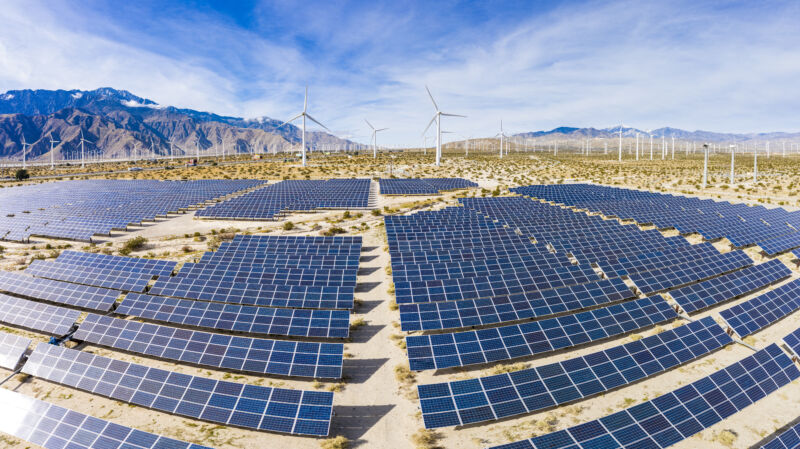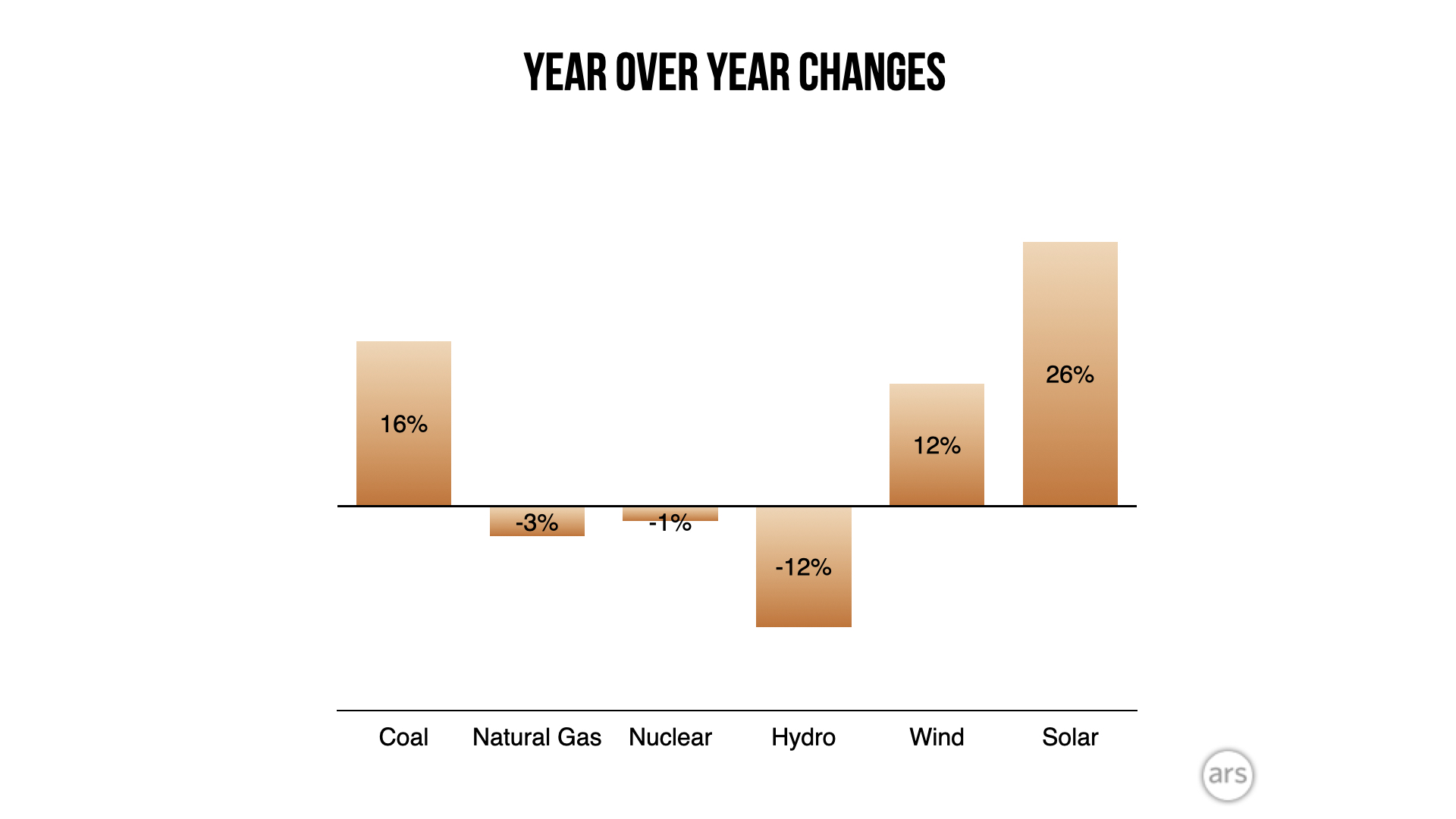
On Monday, the Energy Information Agency released its annual figures for how the US generated electrical power during 2021. The year saw lots of changes as the country moved out of the pandemic, with coal, wind, and solar power all seeing large jumps compared to the previous year. Meanwhile, widespread drought conditions in the west caused a significant drop in hydroelectric production.
Longer term, the big stories are the two renewables, wind and solar. Wind only started outproducing hydro three years ago but has now developed a commanding lead. And solar has gone from a rounding error to 4 percent of annual production over the last decade and is poised for explosive growth.
Living fossils
2021 marks the first increase in annual coal use since the Obama administration. Megawatts generated via coal were up by 16 percent compared to the year prior and accounted for a bit under 22 percent of the total electricity produced. But this is likely to be a temporary change. No new coal plants are planned in the US, and the past decade has seen both the number of operating coal plants drop by half, and coal go from powering 44 percent of US electricity production to only 22 percent.

In the same period, natural gas has gone from supplying a quarter of US electricity to just under 40 percent, with the number of megawatts produced using gas rising by over half. It saw a small decrease over the past year (roughly 3 percent), something that’s happened two other times during the past decade.
The future of gas in the US is difficult to predict. In many parts of the country, it’s now undercut by both wind and solar, although it still outperforms coal and nuclear. And exports of liquified natural gas to Europe had already grown dramatically over the last five years—before the war in Ukraine increased the profits to be earned there. Still, it’s unlikely that gas will see anything close to the plunge that coal has experienced.
In addition to these major generating sources, the US has a smattering of things powered by diesel and other petroleum products. Combined, all of these carbon-emitting sources accounted for just over 60 percent of the US’s electricity in 2021, up about 3 percent from the previous year, primarily driven by the greater use of coal. But a decade ago, carbon-emitting sources delivered over 68 percent of the country’s electricity. That drop has been driven by the growth of renewable sources.
Stuck in idle
Nuclear power has been in an odd stasis for the past decade. A decade ago, it produced about 19 percent of the country’s electricity. In 2021, it produced about 19 percent of the country’s electricity. This is despite the fact that the total number of nuclear plants has dropped by 17 percent over the intervening 10 years. The difference comes in part because the closed plants were generally on the small side, and a large new reactor was completed at an existing plant.

Nuclear remains the largest single source of electricity free of carbon emissions in the US, and the Biden administration is using subsidies to try to keep it that way. Still, the combination of wind, solar, and hydro now produces roughly the same amount of power as nuclear in 2021.
It would already have been eclipsed if it hadn’t been for the drop in hydro production. The number of hydroelectric plants is virtually unchanged since 2011, but its electricity production was down considerably since last year—it’s only been lower once over the last decade. There’s a lot of inter-annual variability in hydro production, so a 12 percent year-over-year drop is not unusual. But a lot of reservoirs in the western US have been reaching critically low levels due to ongoing droughts, so it’s not clear whether we can expect a rebound in hydro production anytime soon.
https://arstechnica.com/?p=1896112

